Making every drop count – IELTS Reading Answers
6 min read
Updated On
-
Copy link
Table of Contents

Limited-Time Offer : Access a FREE 10-Day IELTS Study Plan!
The IELTS Academic Reading: Cambridge Reading Sample; ‘Making every drop count’ with answers. The post will discuss the answers to questions 14-26. The headline of the passage is ‘Making every drop count’
Making every drop count
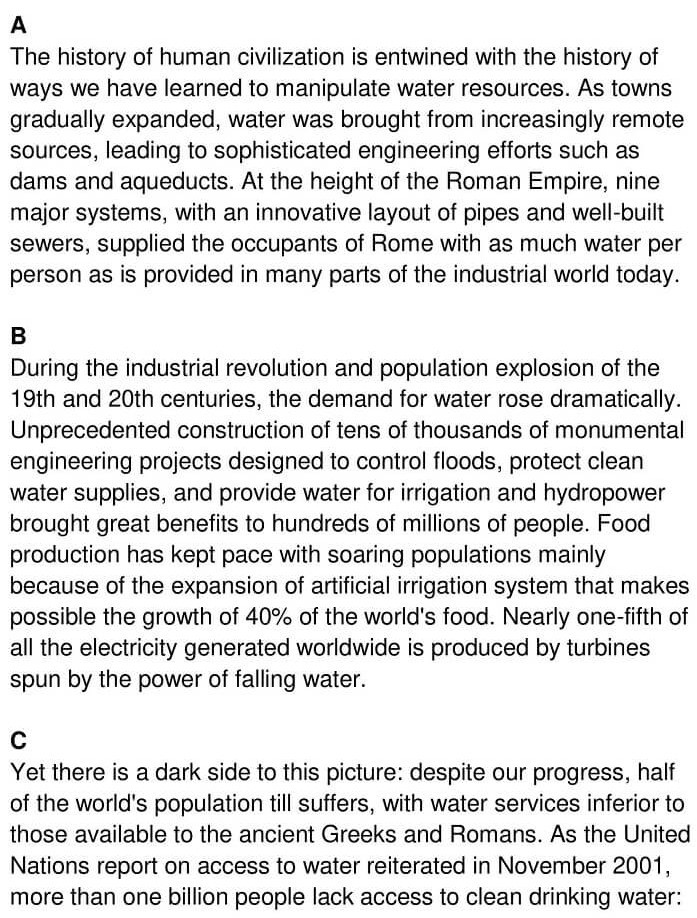
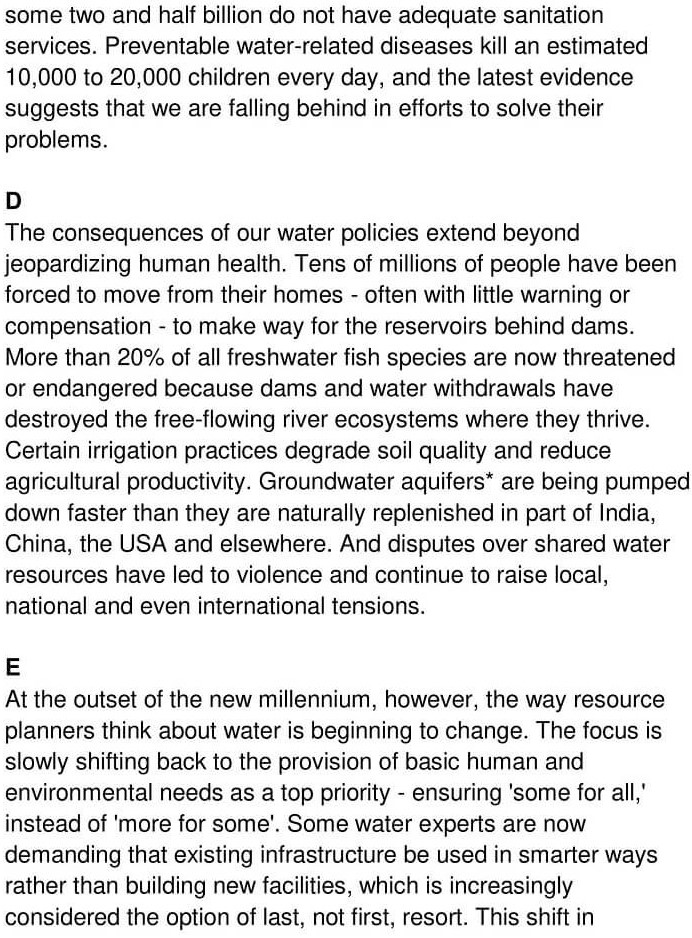
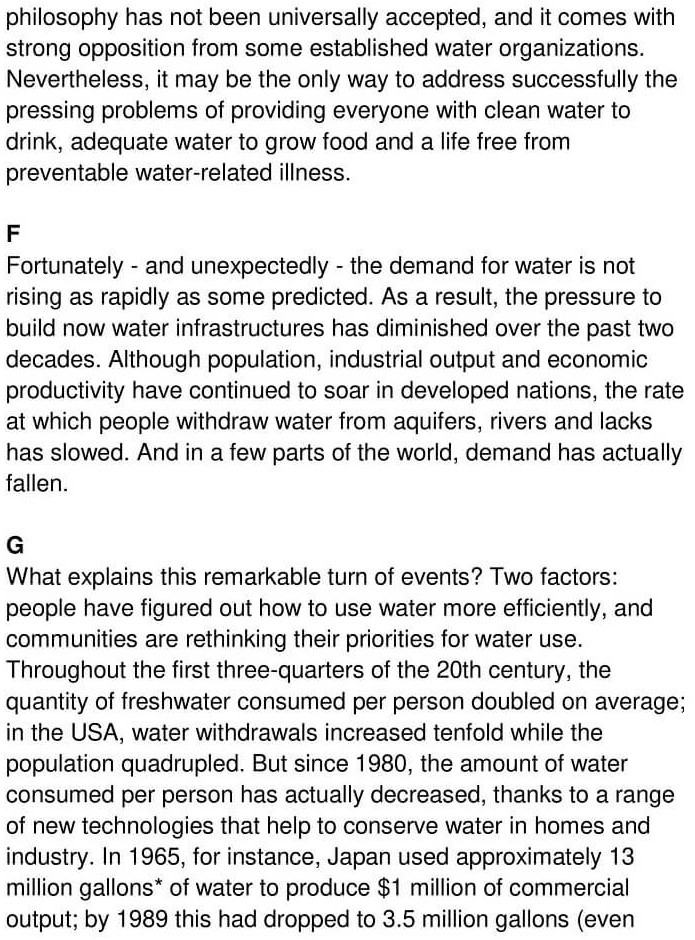
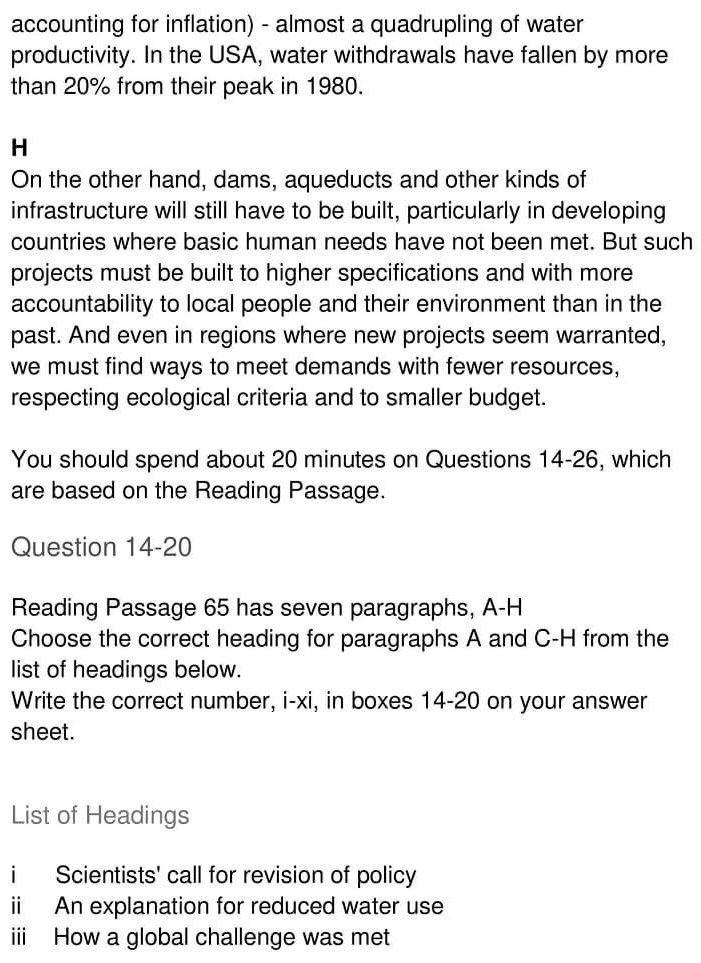
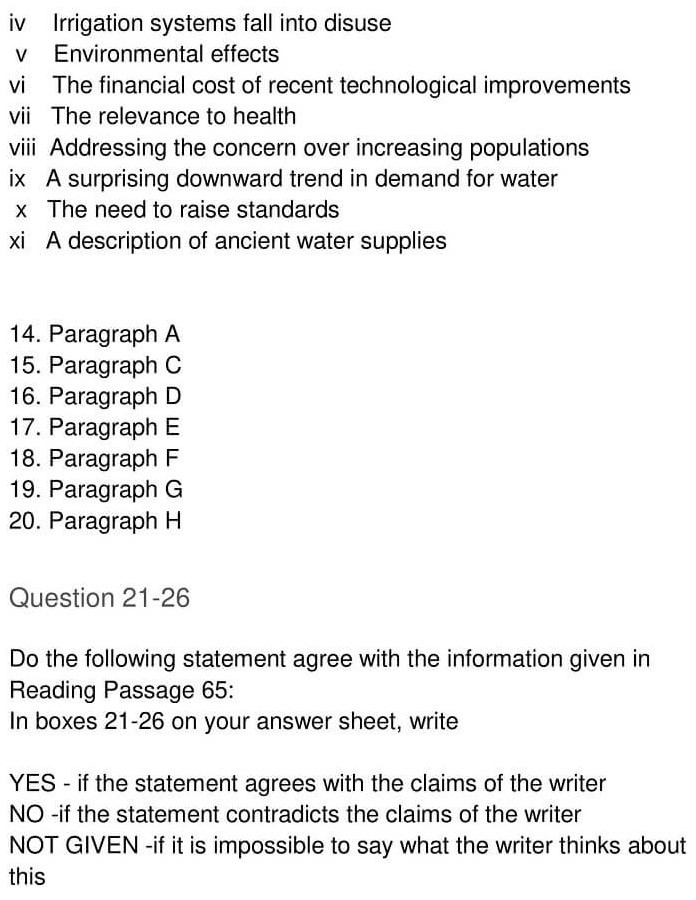

Answers
Unlock Answers
| Questions Number | Answer | Explanation |
|---|---|---|
| 14 | xi | Paragraph A mentions the entwinement of the history of human civilization and the history of ways that have been learned to manipulate water resources. The fifth sentence talks about the Roman Empire and the Nine major systems that supplied water to the occupants of Rome with the layout of pipes and well-built sewers. Here, the entire paragraph describes the ancient water supplies, in which the word “ancient” refers to the Roman Empire. Thus, the answer is xi: A description of ancient water supplies. |
| 15 | vii | In paragraph C, it is mentioned in the fifth sentence that more than a billion people lack access to clean drinking water, while two and half billion people do not get access to sanitation services. Moreover, in the eighth sentence, it is narrated that an estimated 10,000 to 20,000 children are killed every day due to water-related diseases, which can be prevented. Here, paragraph C describes the health dangers owing to the shortage of pure water. Thus, the answer is vii: The relevance to health. |
| 16 | v | Paragraph D narrates the consequences of water policies and the environmental effects of water scarcity. In the third sentence, it is mentioned that
millions of people have been forced to move out of their homes to construct water reservoirs. In the seventh sentence, it is narrated that water withdrawals have destroyed the free-flowing river ecosystems, and irrigation practices degrade the soil quality and reduce agricultural productivity. Here, the entire paragraph talks about the environmental impacts and effects of water shortage. Thus, the answer is v: Environmental effects. |
| 17 | i | Paragraph E mentioned that the way resource planners think about water is starting to change. The focus is slowly shifting back to the provision of basic human and environmental needs as a top priority – ensuring ‘some for all’ instead of ‘more for some’. some water experts demand the existing infrastructure to be used in smarter ways rather than constructing new ones. However, this philosophy hasn’t been accepted globally. Here, resource planners/water experts refer to the Scientists, philosophy refers to policy. So, it is clear that the answer is i: Scientists’ call for revision of policy. |
| 18 | ix | Paragraph F mentions that unexpectedly the water demand has not increased as it was earlier predicted, but the pressure to construct water infrastructure has decreased over the past two decades. Moreover, in the sixth sentence, it is narrated that the rate at which people withdrew waters has slowed, and demand has significantly fallen in some parts of the world. From the paragraph F, we understand the downward trend in water demand. The word “unexpectedly” means surprising and “the rate has slowed down” refers to the downward trend. Consequently, the answer is ix: A surprising downward trend in demand for water. |
| 19 | ii | Paragraph G talks about the two factors that explain the remarkable turn of events where the people have figured out how to use water more efficiently and how communities are considering their priorities for water use. Here, we understand that there are two reasons behind the reduced use of water and the reasons have been mentioned above. So, the answer is ii: An explanation for reduced water use. |
| 20 | x | In paragraph H, it is stated that dams, aqueducts, and other water infrastructure should be built in developing countries. It is mentioned in the fourth sentence that these projects must be built to higher specifications with more accountability to local people and their environment in the past. Here, higher specifications means to raise standards. So, the answer is x: The need to raise standards. |
| 21 | No | In the last sentences in paragraph A, it is clearly stated that water supplied to the occupants of Rome was as much as water per person as is provided in many parts of the industrial world today, which means water supply per person has not increased rather it is equal. So, the answer is No. |
| 22 | Yes | In the sixth and seventh sentences in paragraph B, it is stated that food production has kept pace with soaring populations due to the expansion of irrigation systems which contributes to the growth of 40% of the world’s food. Here, Soaring means increasing and expansion of the irrigation system means improved irrigation systems and the statement agrees with the given question, so, the answer is Yes. |
| 23 | Not Given | In paragraph C, we can notice that the author has given a similar indication of the questions stating that half of the world’s population still suffers, with water services inferior to those available to the ancient Greek and Romans. However, it is not exactly mentioned anywhere in the passage that modern water systems imitate those of ancient Greeks and Romans, so; the answer is NOT GIVEN. |
| 24 | No | In paragraph F, it is clearly mentioned that the rate at which people withdrew waters from water resources has slowed despite the industrial output and economic productivity continuing to soar in the developed nations. This means that the water demand is decreasing. So, the answer is No. |
| 25 | Yes | In the seventh and eighth sentences in paragraph G, it is stated that the amount of water consumed per person has actually decreased, which is due to the range of new technologies that help to conserve water in homes and industries. Here, range of new technologies refers to modern technologies. Since the statement agrees with the information, the answer is Yes. |
| 26 | Not Given | According to the question, information related to ownerships of water infrastructure can be located in Paragraph H and E. In paragraph E, it is mentioned that some water experts are demanding that existing water infrastructure be used in smarter ways than building new facilities. Although the writer has discussed the water infrastructure, there’s no description of ownership. Meanwhile, in paragraph H, it is stated that dams, aqueduct, and other kinds of infrastructure have to be built. However, there’s no clear indication of the question in both the paragraph whether the government should maintain ownership of water infrastructures or not and due to lack of information in tha paragraphs, the answer is NOT GIVEN. |
Check More IELTS Reading Answers
| Nature Or Nurture Answers | The Falkirk Wheel Answers |
| The History Of Glass Answers | The Nature Of Genius Answers |
| The Rocket From East To West Answers | Trees In Trouble Answers |
Also check :
Practice IELTS Reading based on question types

Start Preparing for IELTS: Get Your 10-Day Study Plan Today!
Recent Articles

Nehasri Ravishenbagam

Haniya Yashfeen

Haniya Yashfeen

Haniya Yashfeen
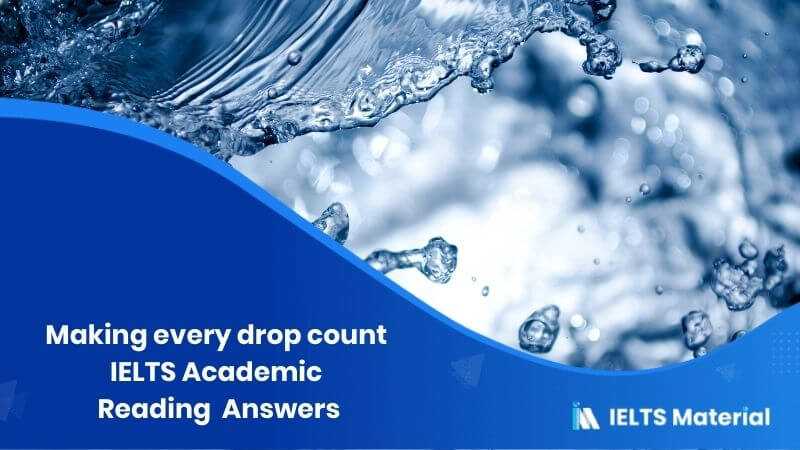



Post your Comments